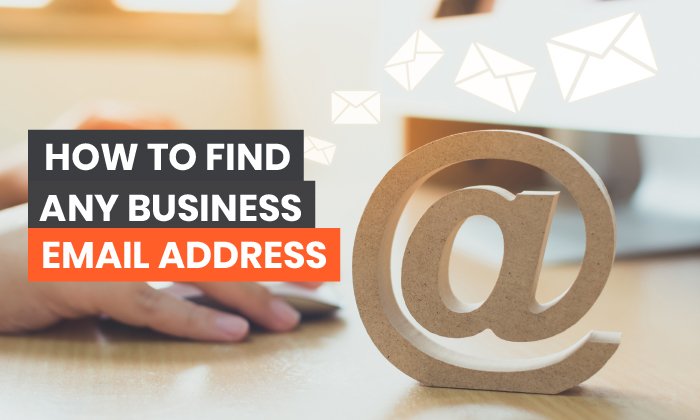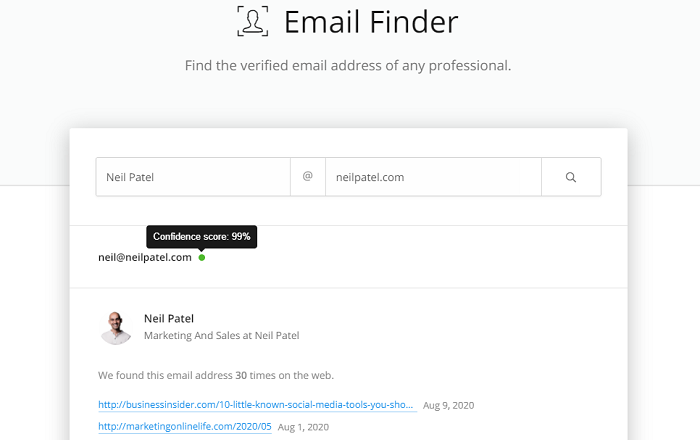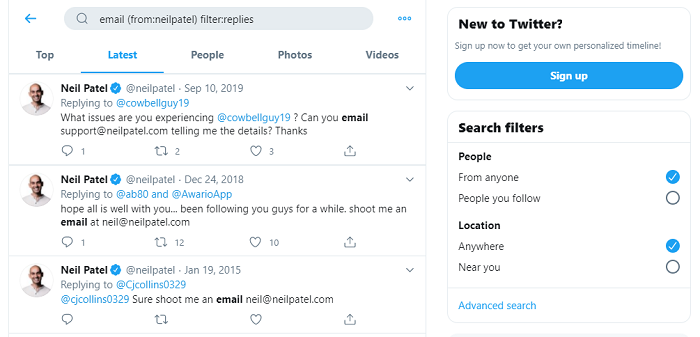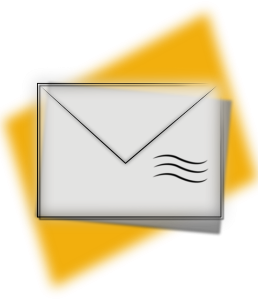
The internet has made communication between businesses more accessible than ever. Collaboration and outreach can often be done with the touch of a button.
But sometimes, finding the email address of someone you’d like to communicate with can be such a hassle.
Getting someone’s contact info doesn’t have to be a headache. Today, I’ll show you how to get anyone’s business email address and teach you how to follow up with them effectively.
All it takes is a simple tool.
Why Would You Need to Find Someone’s Email Address?
You probably know sending unsolicited spam is a terrible idea. So what reason would you have to go tracking down someone’s email address?
Perhaps you need to get in direct contact with someone hard to reach like a CEO, manager, or investor. Maybe you’re trying to recruit a specialist or subject matter expert for contract work. Or you’re trying to get the email of a website or blog owner as a part of a link reclamation strategy.
Some of the examples listed above are forms of email prospecting, the process of researching and connecting with potential leads. Usually, the goal is to get a sale. But you may be after some other benefit like a review, information, or a collaboration.
While people can use the tools we discuss in this article for nefarious purposes, like sending unwanted spam, there are very legitimate reasons to track down someone’s email address.
Rather than waiting around for people to visit your site and reach out, you’re taking matters into your own hands. When done well, it can be one of the best ways to engage with leads and collaborators.
Cold outreach is a contentious subject, but it can be quite useful if you know what you’re doing. The problem is, most marketers are doing it wrong.
Don’t want to be one of them? Keep reading.
How Not to Use Email Search
While there are legitimate reasons to use email search, you’ll want to tread carefully to ensure you’re not sending spam.
What’s the big deal? Well, it could impact your email deliverability. If your domain gets reported frequently, even your legitimate messages will go straight to your target’s spam folder.
And in some countries, it’s downright illegal. In the US, due to the CAN-SPAM Act, it could get your business fined up to $43,280 for each spam email. That’s enough to put almost any small business into bankruptcy.
On top of these consequences, being spammy is going to get your messages ignored. It doesn’t work.
Cold emails and spam are very different things. Spam is an “unsolicited bulk email.” Cold outreach is identified by its personalization and relationship building.
Of course, it’s very easy to cross this line, so make sure you’re not breaking the CAN-SPAM Act.
- If your message includes simple correspondence rather than an advertisement, only the following applies: Don’t use deceptive subject lines or To/From headers.
- If it is an ad, identify it as such and include a way to opt-out of future emails.
- Remove anyone who opts out from any mailing lists within ten days. (Better yet, don’t add people to your mailing lists without their permission.)
- Include a physical address where you can be contacted.
This step also builds trust with users as they know the reason behind your email and how they can contact you to not receive more email if needed.
Don’t Just Advertise
It’s better to use email search to make meaningful connections with other businesses. Don’t use it solely to advertise, as it could turn your the people you’re trying to contact away.
If you’re sending the same carbon copy email to dozens of people, you’re doing it wrong.
It’s not the vest idea to buy email lists. While it may not be technically illegal, doing so may violate CAN-SPAM. It’s an easy way to get your domain blacklisted.
No one likes receiving unsolicited advertisements. All it does is ruin your reputation for a nominal clickthrough rate.
Instead of sending annoying spam and ensuring potential leads ignore you, let’s learn how to do it right.
Finding Your Target’s Email Address
First step: getting your prospect’s email.
How are we going to do that? It’s simple: with an email finder. When you can’t locate someone’s contact info, these tools are a lifesaver.
All you have to do is input someone’s name or website URL, and you instantly get their email. Sometimes these are scraped from the web. Other times, they are a guess based on other employees’ emails.
The Best Email Finders
It’s important to choose a reliable service, as high bounce rate affects your deliverability. One I recommend is Hunter because it’s easy to use and you get fifty free searches per month.
Hunter’s domain search product gives you access to the emails behind a website, while the Email Finder product gets you any person’s contact info. Let’s try it.
Visit the Email Finder page and type in the name of your prospect and their company’s domain. The results will pop up immediately.

One cool thing you’ll notice is Hunter cites its sources. You can see where the suggestion came from and check yourself to ensure the information is correct.
It’s good to try out a range of email finders, as they may have different contact info. So if Hunter isn’t helping, FindThatLead and VoilaNorbert are two other services worth trying.
FindThatLead is made for B2B companies. With this tool, you can find leads, search by audience segment, or get someone’s email through social media.

FindThatLead’s Email Sender is a great extra feature. It handles email automation for you and helps you build a campaign targeting the leads you gather.
VoilaNorbert brings a more sophisticated touch to email search. It’s not just a simple tool you plug a domain into; it’s a full service with bulk actions, integrations, and an API.
It runs primarily on a subscription model, but you can also buy one-use credits. Signing up gets you fifty leads for free.
Hunter is perfect if you need a simple email finder. FindThatLead is great for B2B businesses, and VoilaNorbert offers you a full suite of products that are worth the price tag.
Other Ways to Get a Prospect’s Email Address
Before you spend money on a tool you may not need, you might want to consider other ways of obtaining a prospect’s email.
First up: Google your prospect’s name and check if they have a personal website. Chances are, you can find their email on their site’s “About” page, or at least a “Contact” form. If you’re after someone who’s part of a company, you could also try using their business’ contact form on their site and ask to get connected to them.
Check their social media accounts on Twitter, Facebook, LinkedIn, Instagram, etc. If you’re lucky, their email will be right there in their bio.
You can also try Twitter Advanced Search.
Add your prospect’s Twitter name under “Accounts,” then try words like “contact,” “reach,” “email,” and “dot.”
Try ticking “Only show replies.” You’ll skip the irrelevant posts and get straight to previous contact requests.
Let’s see it in action with my Twitter profile.

There’s my email. Easy as that.
Reaching Out and Getting a Response
Cold emailing can make establishing the new relationship more difficult. Because it’s unsolicited, you’ll need to clearly state why you’re emailing them right off the bat.
You don’t want to blow it before you’ve even started, so let’s make sure you’re doing it right.
Use Templates as Inspiration
Below I provide some examples and templates you can use for your email sending. You can find plenty of others online, too.
But I don’t recommend copying and pasting your email to multiple prospects. People will see right through you if your emails aren’t personalized.
Templates are a good way to get an idea of what you should be doing. But sending impersonal, carbon copy emails to dozens of people usually won’t get many responses, as most email readers know how to spot something that isn’t personalized to them.
Use a template as a base, then build on it for your business’ needs.
Personalize Your Cold Outreach Email
Personalizing your emails is the best way to increase engagement. And it’s especially important when conducting cold outreach.
How do you personalize your email? Do your research! Subscribe to your prospect’s newsletter, read their articles, skim their books, etc. Find a conversation starter and something to leverage to get their attention.
Here’s an example:
Hey {name},
I just read your book {book title}, and it was insightful. {Mention something specific you liked about it.}
I run a {industry} business, and I still have some questions. Mind if I send them your way?
Thanks,
{your name}
You can also just include the questions in the email.
Another way to personalize your cold email is by bringing up a clear pain point you know your target is experiencing. Example:
Hi,
I was browsing your website, and I noticed a few typos. {Link to page and description of the errors.}
I work for {company}. We provide affordable editing services for bloggers like you. Typos in your work can throw off readers, so we’d like to help you patch those up. Our services page is here if you’re interested {link}.
Regards,
{your name}
Here we present an exact problem and point out where your prospect is experiencing it, then offer a solution. If you have any statistics to prove your service works, throw those in as well.
Email Image Best Practices
As you may know, including images in email marketing is a must, but what about professional B2B emails?
People have come up with plenty of creative ways to use images in cold outreach campaigns. The right image could make your pitch more memorable.
For correspondence and conversation-starters, simple is likely the best way to go.
Presentation is important, but your offer should stand on its own.
That said, if being simple isn’t working for you, give images a try. It could be a good way to increase engagement.
Make a Connection
Cold outreach is all well and good, but one of the best things you can do is to warm those emails up a little bit. You can do that by establishing a connection beforehand.
One way to warm up for an email campaign is to contact your target via their social media accounts. Shooting them a simple direct message through Twitter, LinkedIn, etc. might make them more receptive to your offer.
Unfortunately, sometimes you can do hours of research, write the perfect personalized email, and still get ignored.
But what if you strike up a dialogue and get to know your prospect first? Or even reach out and ask for their email directly rather than going around them to find it?
That’s a much better way of getting results.
Conclusion
Email finders are a vital part of an outreach strategy, but finding someone’s email is only half the battle.
You need to put work in, do your research, write a personalized email, and make it creative, so it doesn’t get sent to the trash.
Your goal isn’t just to advertise your services. It’s to create a real relationship that’s mutually beneficial to both parties.
Use email finders for good intentions, like making connections, reaching out, and establishing working relationships. Do not use it for evil, like spamming and sending mindless sales emails.
What are your cold outreach strategies that have gotten the best results?
The post How to Find Any Business Email Address appeared first on Neil Patel.




Recent Comments